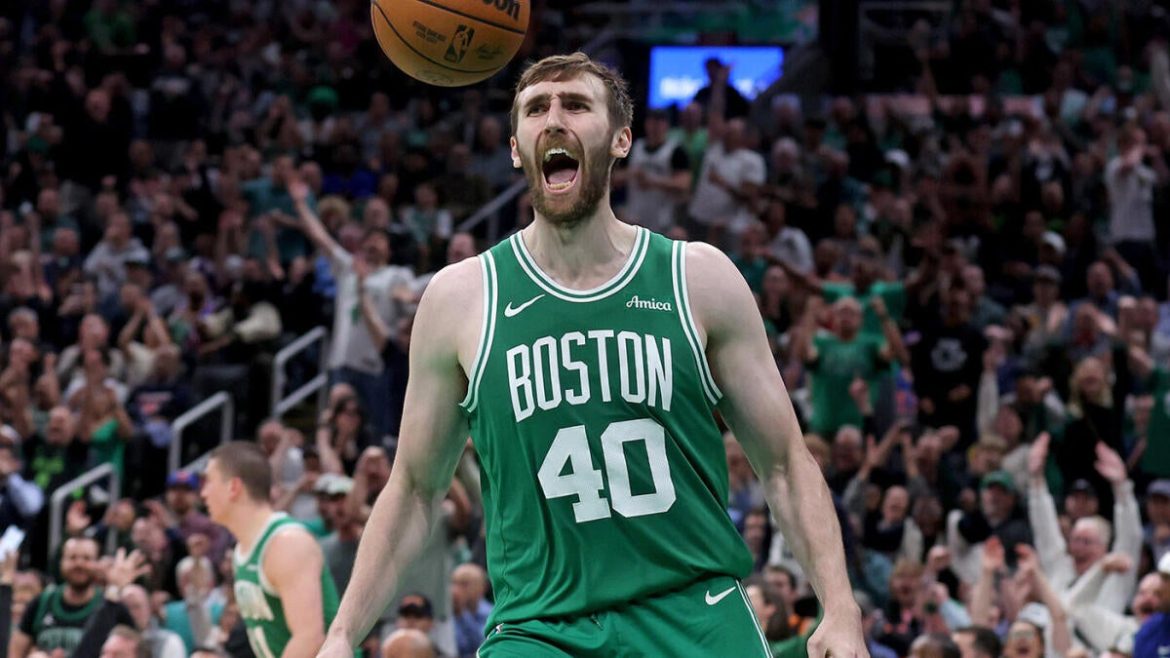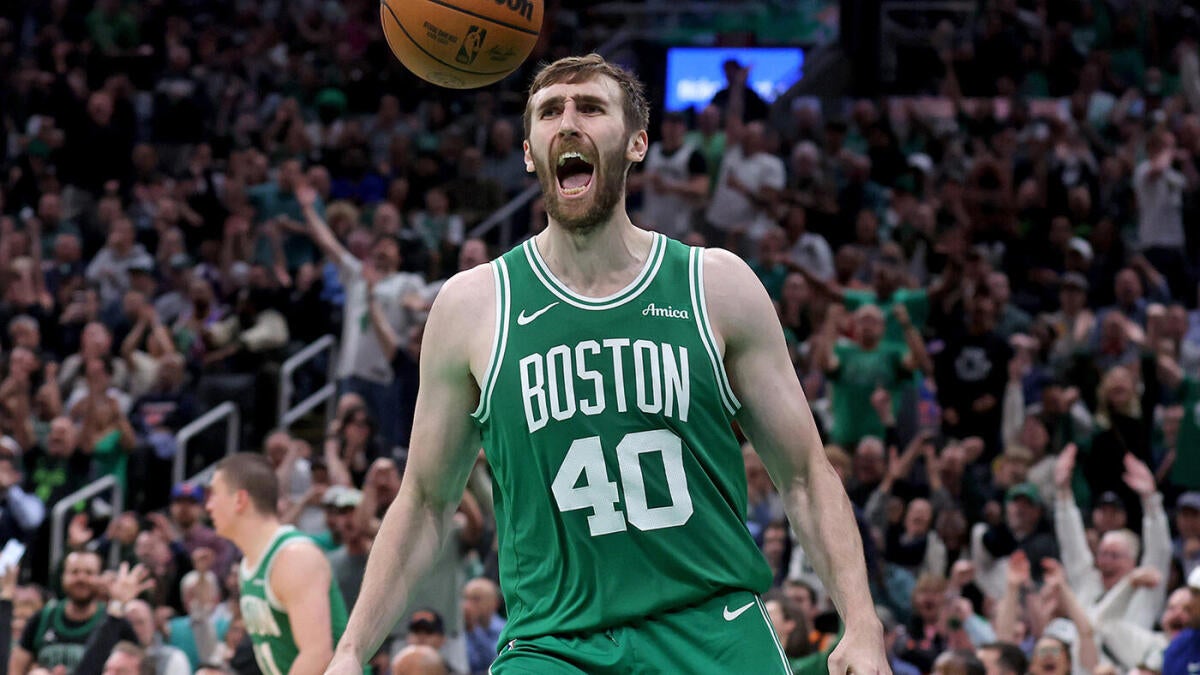The Boston Celtics’ offseason has been marked by significant roster changes, with the departure of Luke Kornet to the San Antonio Spurs standing out as a pivotal move. Kornet, a key reserve big man, left the Celtics on a four-year, $41 million deal, reflecting broader trends in NBA free agency where teams must navigate financial constraints, player ambitions, and strategic goals. His exit highlights a shift in the Celtics’ lineup dynamics and raises questions about how the team will address the resulting gap in their frontcourt rotation.
Luke Kornet’s Role and Impact on the Celtics
Luke Kornet’s contributions to the Celtics extended beyond his statistical averages of around six points and five rebounds per game. His impressive 67% shooting percentage showcased his efficiency as a modern NBA big man, capable of stretching the floor and providing a reliable defensive presence. Kornet’s ability to play both ends of the court made him a valuable asset, particularly in a league where versatility is highly prized. His departure leaves the Celtics with a notable void in their frontcourt depth, which they must address to maintain their competitive edge.
The financial aspect of Kornet’s move to the Spurs is also significant. The four-year, $41 million contract he signed underscores the growing value of role players who bring specific skill sets to the table. For the Celtics, losing Kornet introduces challenges in salary cap management and roster building, especially as they operate near the luxury tax apron. The team’s inability to retain Kornet suggests a strategic decision to allocate resources elsewhere, potentially to retain core veterans like Al Horford and Derrick White.
Free Agency Strategies: Celtics’ Challenges and Responses
The Celtics’ offseason has been characterized by a flurry of activity, including trades and efforts to retain key players. However, their inability to re-sign Kornet points to the financial constraints they face. To mitigate his loss, the Celtics have reportedly signed Luka Garza, a promising young center, on a two-year deal. Garza, known for his high-scoring post play and potential for growth, could help fill the immediate void left by Kornet. His addition reflects the Celtics’ strategy to blend youth and experience, adjusting their roster composition amid salary cap pressure.
This transition highlights the intricate balancing act teams face during free agency. Managing talent retention, ensuring financial flexibility, and maintaining competitive viability are all critical components of successful roster construction. The Celtics’ approach signals a commitment to building a team that can compete both in the short and long term, even as they navigate the complexities of the salary cap and luxury tax thresholds.
San Antonio Spurs’ Aggressive Pursuit and What It Means
The San Antonio Spurs’ successful bid for Luke Kornet illustrates their intent to bolster their frontcourt significantly. By allocating their full midlevel exception and committing to a substantial contract, the Spurs have demonstrated a confident front office aiming to reinforce their interior defense and shooting efficiency. Kornet’s arrival provides the Spurs with tactical flexibility, allowing them to stretch the floor and anchor their defense—key elements in modern NBA schemes.
Kornet’s proven track record in a competitive setting like Boston, combined with his efficiency metrics, should translate well into San Antonio’s roster plans. His addition is part of the Spurs’ wider effort to accelerate their rebuilding process and compete in the tough Western Conference landscape. The move underscores the importance of versatile big men in today’s NBA, where players who can defend and shoot effectively are highly sought after.
Broader Implications for NBA Free Agency Dynamics
Luke Kornet’s transition from the Celtics to the Spurs exemplifies several broader trends in contemporary NBA free agency:
– Increased Valuation of Role Players: Kornet’s substantial contract highlights how teams are willing to invest heavily in role players who exhibit specific skill sets, such as efficiency, shot-blocking, and floor spacing. These attributes are critical in championship-contending rotations, making players like Kornet valuable commodities.
– Financial Constraints Shaping Team Decisions: The Celtics’ difficulty in retaining Kornet points to how salary cap ceilings and luxury tax repercussions influence roster construction. Even successful franchises must make tough choices to balance their financial frameworks with their competitive aspirations.
– Competitive Market for Serviceable Big Men: Interest from multiple teams, including the Clippers and Spurs, signals a league-wide scarcity of reliable big men who can defend and shoot effectively. This scarcity drives up the value of players like Kornet, making them highly sought after in free agency.
– Shift Toward Youth and Potential: The Celtics’ quick signing of Luka Garza after losing Kornet suggests a strategic pivot toward integrating young talent. This approach is common across the league as teams seek to maintain competitive balance while managing costs effectively.
Conclusion: Navigating Change and Building for the Future
The Boston Celtics’ loss of Luke Kornet in free agency is a pivotal event that shapes their offseason narrative. It underscores the delicate interplay between player market value, team financial strategies, and roster construction. While Kornet’s departure leaves a tangible gap, the addition of Luka Garza and continued efforts to secure other free agents point toward a proactive approach to roster resilience.
For the San Antonio Spurs, landing Kornet on a lucrative deal signals a bold step in their rebuilding journey, hoping to leverage his skills in building a competitive core. Overall, this free-agent movement epitomizes the evolving NBA landscape, where strategic financial management and talent identification are as crucial as on-court performance for sustained team success. The Celtics now stand at a crossroads, balancing immediate roster needs with long-term aspirations as the next NBA season approaches. Their ability to navigate these challenges will be critical in determining their competitiveness in the upcoming season and beyond.





